Sketch to AI Art: How Designers Are Creating Digitally
Table of Contents
In the world of fashion design, where creativity meets precision, the leap from paper to digital has never been more exciting. Sketch to AI art is rapidly transforming how designers bring their visions to life. With just a hand-drawn sketch and the right digital tools, creatives can now generate stunning, AI-enhanced visualizations in minutes, something that once took hours or even days.
This groundbreaking process allows fashion professionals and aspiring artists alike to explore designs in new dimensions, test color palettes instantly, and experiment without limits. Whether you're creating a lookbook, prototyping a collection, or simply bringing a concept to life, sketch-to-AI-art technology is bridging the gap between imagination and execution like never before.
What Is Sketch to AI Art?
Sketch to AI art refers to the process of converting traditional or digital hand-drawn fashion sketches into AI-generated artwork using artificial intelligence tools. These tools analyze the outlines, textures, and style cues from the original drawing and transform them into high-quality visual renderings, often adding realistic fabrics, shading, and even animated motion to the design.
Most sketch-to-AI-art tools use deep learning models trained on thousands of fashion images, illustrations, and garment types. By recognizing patterns in user input, the AI can predict how a flat sketch would appear as a finished garment or style composition. The result is a polished, often photorealistic image that enhances the designer’s creative intent.
This fusion of artistic intuition with computational power opens up vast possibilities for ideation, prototyping, and storytelling. For both emerging and seasoned designers, sketch to AI art represents a faster, smarter, and more dynamic way to create fashion.
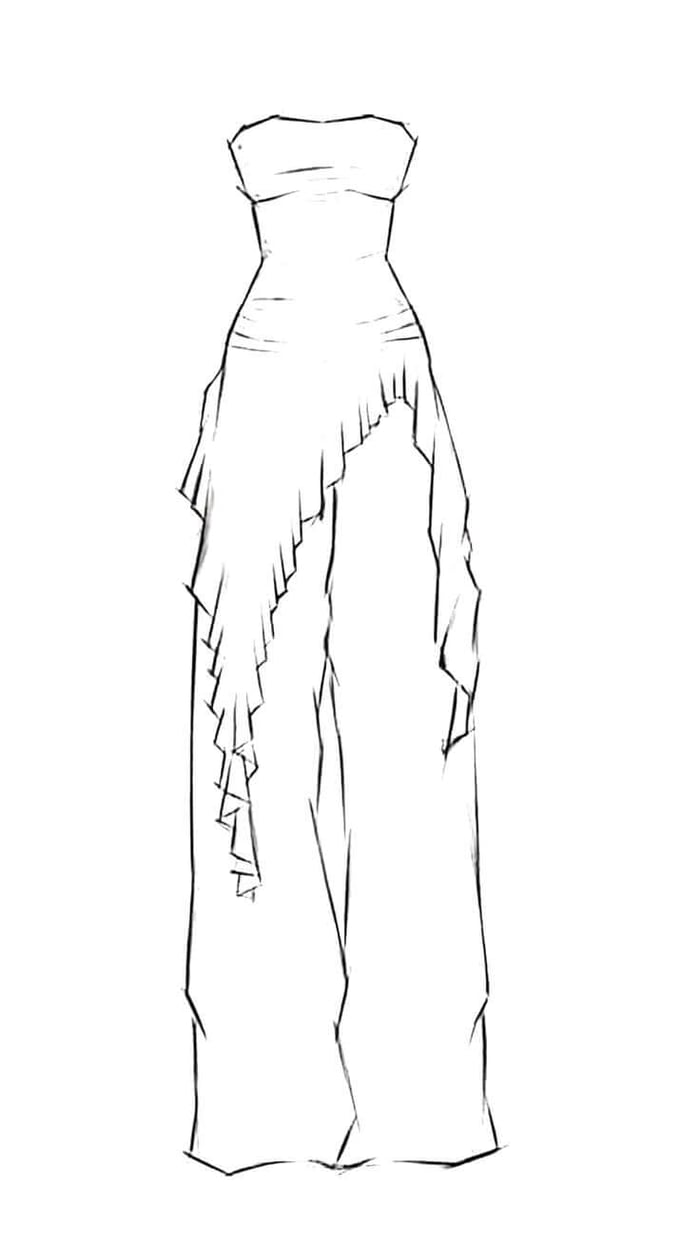
Why Designers Are Shifting from Paper to Digital
For decades, fashion sketches on paper were the cornerstone of design studios. But in today’s fast-paced, tech-driven industry, sketch to AI art has emerged as a smarter alternative that empowers designers to innovate quickly and iterate freely.
One of the key reasons for this shift is speed. AI tools can generate multiple design iterations from a single sketch in a matter of seconds, allowing designers to test ideas and pivot directions without starting from scratch. What used to require a full design team and multiple drafts can now be streamlined by a single artist with the right software.
Visualization is another game-changer. AI can turn a 2D sketch into a 3D-like image with lighting, fabric textures, and color realism that’s hard to achieve by hand. This gives designers a much clearer sense of how a garment might look in real life or on a model, helpful not just for internal decision-making, but also for showcasing designs to clients, buyers, or production teams.
Finally, integration is a huge advantage. AI-generated art can be imported into digital platforms for virtual try-ons, digital runway shows, or even augmented reality previews. This creates a seamless design pipeline, from initial concept to full-blown visual experience all without lifting a pencil beyond the first sketch.
Why Designers Are Shifting from Paper to Digital
For decades, fashion sketches on paper were the cornerstone of design studios. But in today’s fast-paced, tech-driven industry, sketch to AI art has emerged as a smarter alternative that empowers designers to innovate quickly and iterate freely.
One of the key reasons for this shift is speed. AI tools can generate multiple design iterations from a single sketch in a matter of seconds, allowing designers to test ideas and pivot directions without starting from scratch. What used to require a full design team and multiple drafts can now be streamlined by a single artist with the right software.
Visualization is another game-changer. AI can turn a 2D sketch into a 3D-like image with lighting, fabric textures, and color realism that’s hard to achieve by hand. This gives designers a much clearer sense of how a garment might look in real life or on a model—helpful not just for internal decision-making, but also for showcasing designs to clients, buyers, or production teams.
Finally, integration is a huge advantage. AI-generated art can be imported into digital platforms for virtual try-ons, digital runway shows, or even augmented reality previews. This creates a seamless design pipeline, from initial concept to full-blown visual experience—all without lifting a pencil beyond the first sketch.
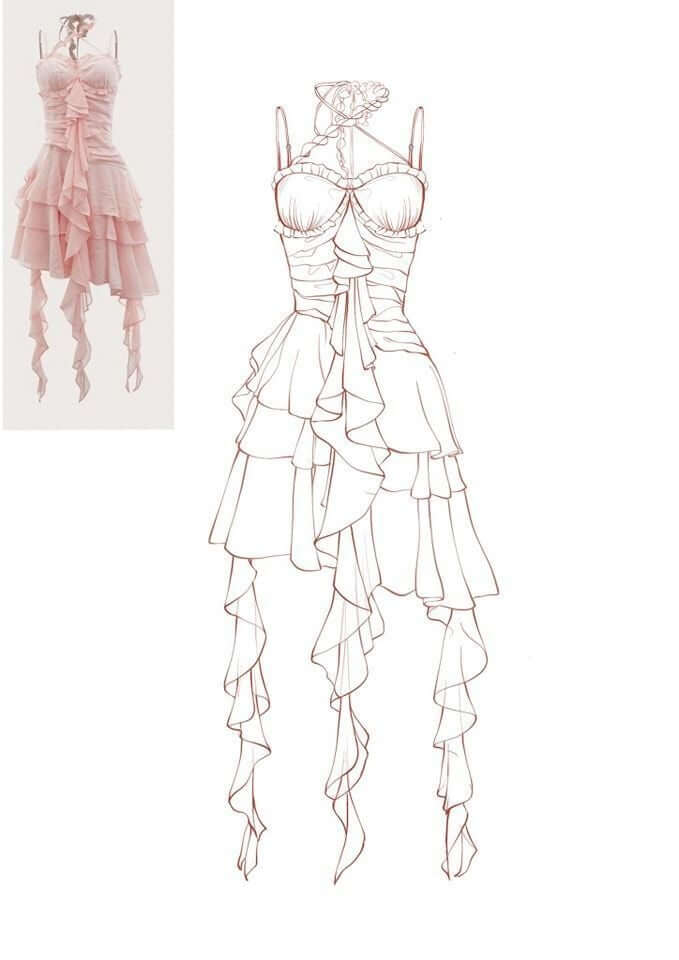
Top Sketch to AI Art Tools for Fashion Designers
As the demand for sketch to AI art continues to grow, several powerful tools have emerged to help fashion designers transform hand-drawn concepts into visually compelling digital art. Among these, Modelia stands out as an industry-specific solution designed to streamline creative workflows for fashion brands.
1. Modelia Sketch to Image
Modelia’s native Sketch to Image tool allows designers to upload rough sketches, digital or scanned and instantly generate high-quality fashion visuals. The platform automatically enhances outlines, applies realistic fabric textures, and places designs on virtual models with customizable poses, backgrounds, and lighting.
Built specifically for the fashion industry, Modelia offers:
A free version with essential features
Premium plans with high-resolution output and advanced styling options
Seamless integration with other Modelia tools like avatar creation, clothing previews, and campaign visuals
→ Explore it here
2. Adobe Firefly
Integrated with the Adobe Creative Cloud, Firefly lets users turn sketches into fully rendered visuals using generative AI. Designers can simulate colorways, fabrics, and compositions directly within Photoshop and Illustrator, perfect for those already using Adobe’s ecosystem.
3. Midjourney
Operating via Discord, Midjourney creates surreal and highly stylized images from sketch uploads and descriptive prompts. It’s especially popular for conceptual fashion, lookbooks, and experimental digital collections.
4. Artbreeder
Artbreeder allows designers to evolve images using AI through a blend of existing styles. While not fashion-specific, it's a great tool for moodboarding and silhouette exploration in early design phases.
5. DeepArt
This tool uses neural style transfer to apply artistic effects to fashion sketches. It’s often used to stylize presentation boards, develop collection themes, or simulate textile patterns.
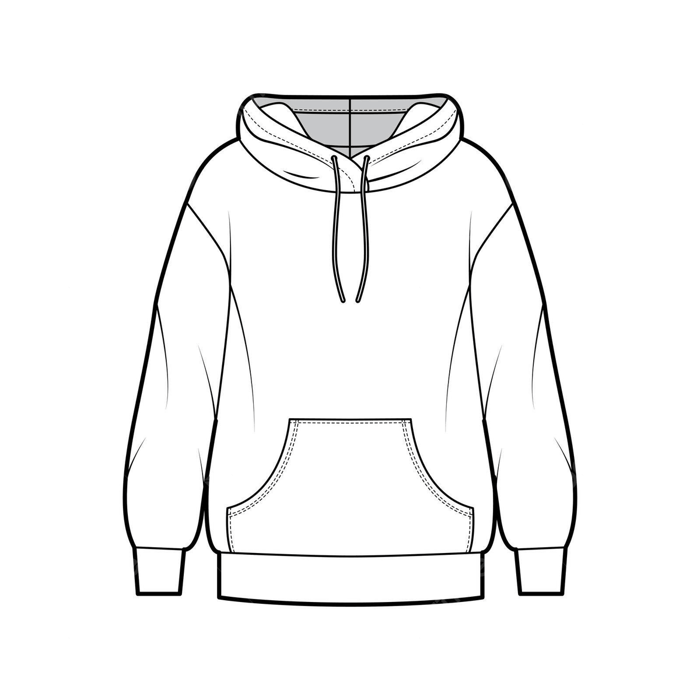
Advantages for Designers and Brands
The sketch to AI art revolution isn't just transforming the creative process, it’s also delivering tangible benefits to designers, fashion houses, and retail brands.
1. Time and Cost Efficiency
By drastically reducing the time between ideation and presentation, designers can accelerate product development cycles. Instead of waiting for mockups or sample production, they can create detailed visuals on demand. This not only speeds up workflows but also cuts down material and prototyping costs.
2. Enhanced Presentations
AI-enhanced fashion art looks polished and professional, making it easier to pitch ideas to investors, clients, or production teams. These visuals also serve as compelling assets for marketing campaigns, investor decks, and digital lookbooks, before a single garment is ever made.
3. Data-Driven Design Decisions
Some sketch-to-AI tools can integrate user feedback or trend analysis to suggest alterations in real time. This data-informed design approach helps brands create products more likely to succeed with their target market, reducing waste and maximizing appeal.
4. Better Collaboration
AI-generated visuals are easier to share and revise, fostering collaboration across remote teams, factories, and creative partners. Brands with distributed teams can stay aligned, regardless of location or time zone.
Future Trends and Creative Opportunities
As technology advances, the creative frontier for sketch to AI art continues to expand—offering even more exciting possibilities for fashion designers and brands alike.
1. Hyper-Personalization
Emerging AI models are increasingly able to generate unique fashion art tailored to specific audiences or even individual body shapes. Designers will soon be able to preview how a design might look on different body types or adjust features in real time based on personal data.
2. AI-Generated Fabric Simulation
More advanced systems are beginning to simulate fabric movement and drape, helping designers visualize how materials will behave in motion. This opens up new doors for performance wear, dance costumes, and conceptual runway pieces.
3. Integration with Virtual Fashion and the Metaverse
Sketch to AI art is becoming the gateway to fully digital fashion experiences. Designers can create digital-only garments, avatars, and NFTs that live exclusively in virtual spaces. This trend is already taking root in gaming, virtual fashion weeks, and metaverse platforms.
4. Co-Creation with AI
In the near future, designers may collaborate with AI models not just to render sketches but to generate entirely new ideas together. This synergy could blur the lines between human creativity and machine suggestion, enabling hybrid collections that evolve through conversation and iteration.
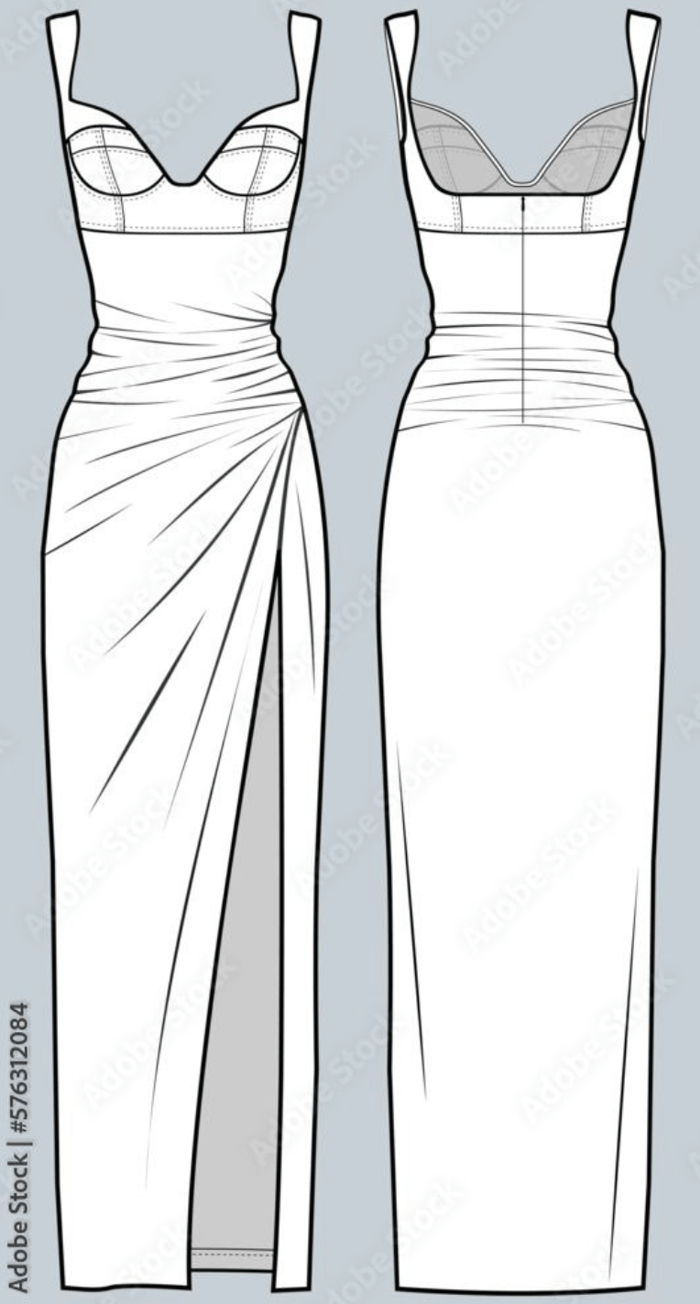 | 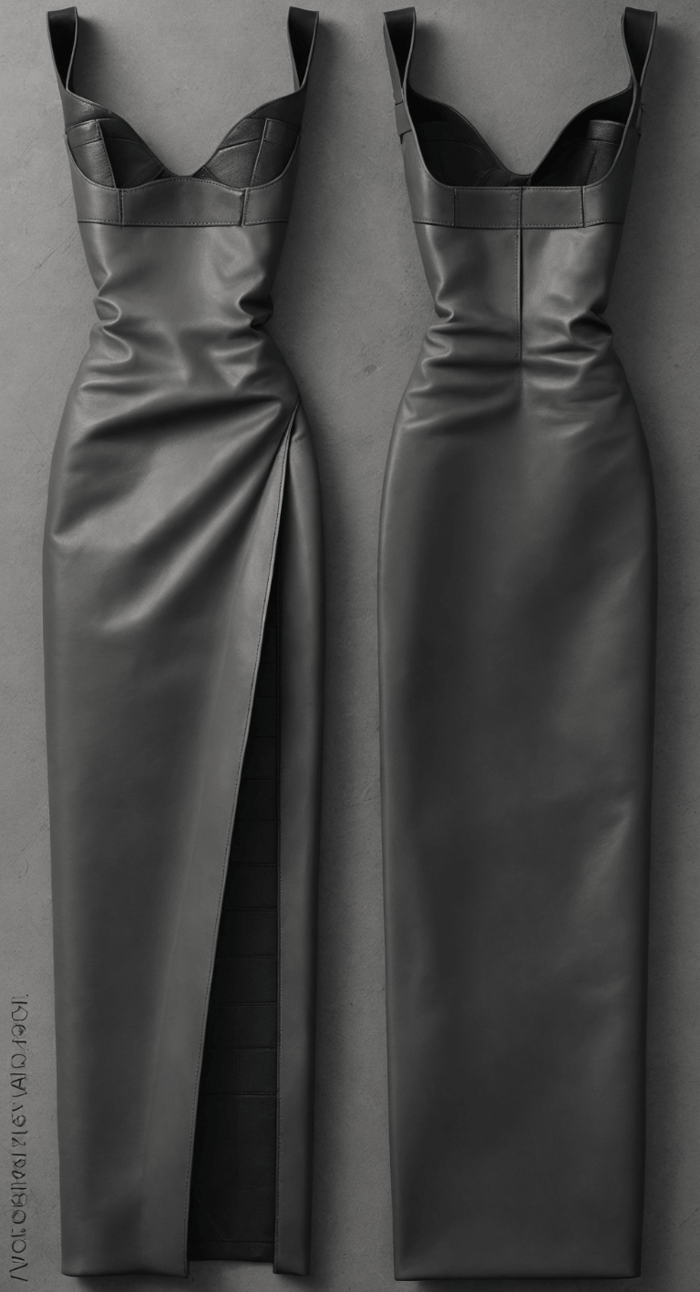 |
Conclusion
The rise of sketch to AI art is ushering in a new era of creativity, efficiency, and visual storytelling in the fashion world. Designers no longer need to choose between artistic expression and digital agility, they can have both. With the right tools, a single sketch can become a runway-ready rendering, a mood board centerpiece, or even a virtual garment within minutes.
Whether you're an independent artist, part of an emerging label, or designing for a global brand, embracing sketch-to-AI technology can help you stay ahead of the curve and push the boundaries of what fashion can be.
Visit our full guide here and bring your fashion vision to life with AI
FAQ: Sketch to AI art
What is Sketch to AI art?
Sketch to AI art is a process where artificial intelligence transforms a simple hand-drawn sketch into a polished digital artwork or realistic image, like a photo, in seconds.
How does Sketch to AI art work?
You upload your sketch to an AI tool. The system analyzes the lines and shapes, then generates a refined illustration or artwork based on your input and chosen style.
Who can use Sketch to AI art tools?
These tools are ideal for artists, designers and fashion professionals. They help speed up the creative process, visualize ideas quickly, and explore multiple styles effortlessly.
Can Sketch to AI art be customized?
Yes, most platforms allow you to adjust styles, colors and details. You can refine the output until it matches your vision, making it useful for both personal projects and professional work.
How would you rate this article:
Related Articles
- Best 7 Botika Alternatives You Should Check Out in 2025
- How to Mirror an Image Step-by-Step
- Old School Fashion Trends That Are Back in Style
- What is Google's Virtual Try-On feature?
- Augmented Reality Fashion: How AR is Transforming the Future of Shopping and Style
- How to Swap Faces in Photos with AI
- AI Face Swapping: Transform Photos and Videos with Cutting-Edge Technology
- Content Marketing for Ecommerce: How to Attract and Retain Customers
- The Best Fashion Accessories for Every Season: Style Your Look Year-Round
- Best AI Content Generator Tools to Try in 2025


